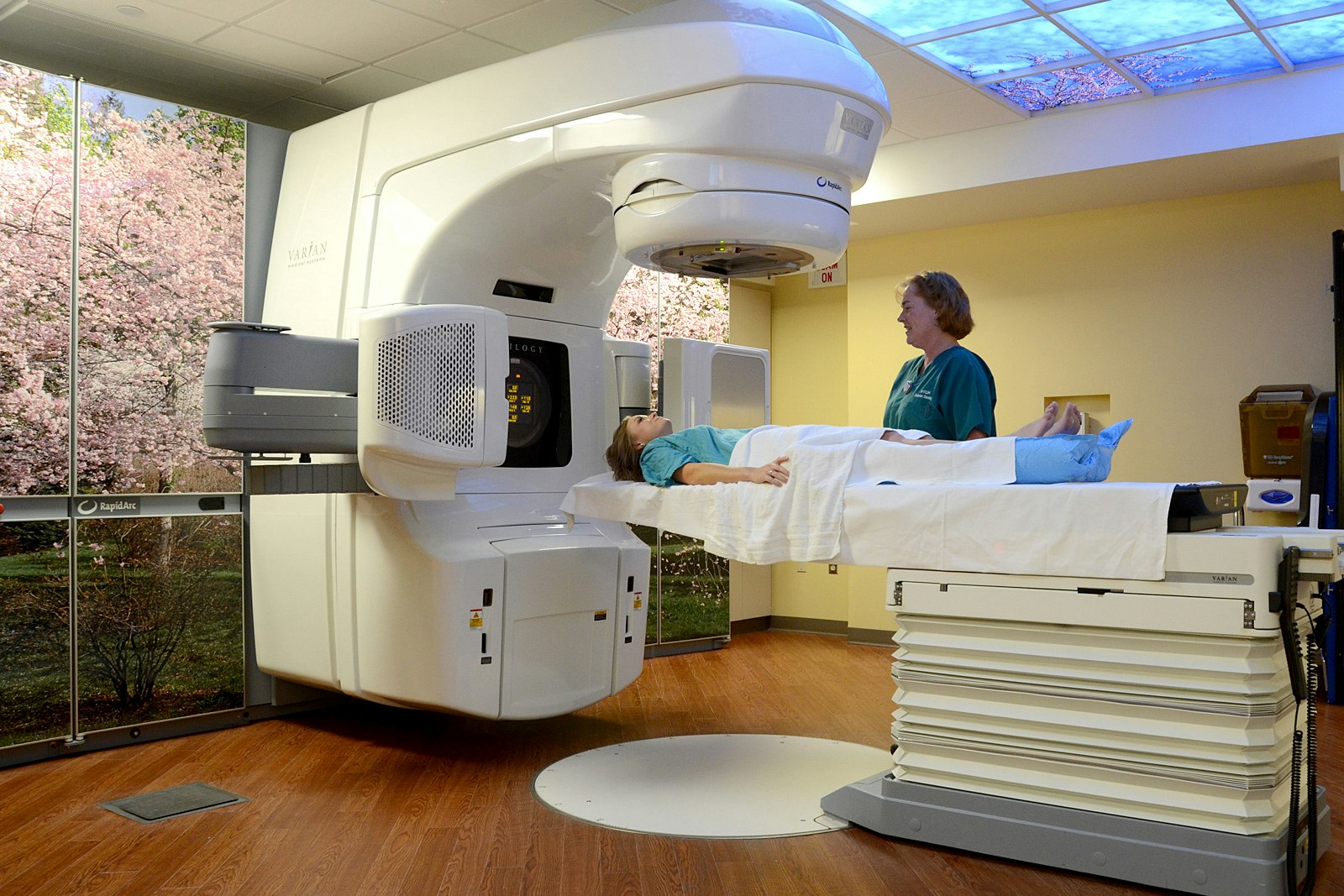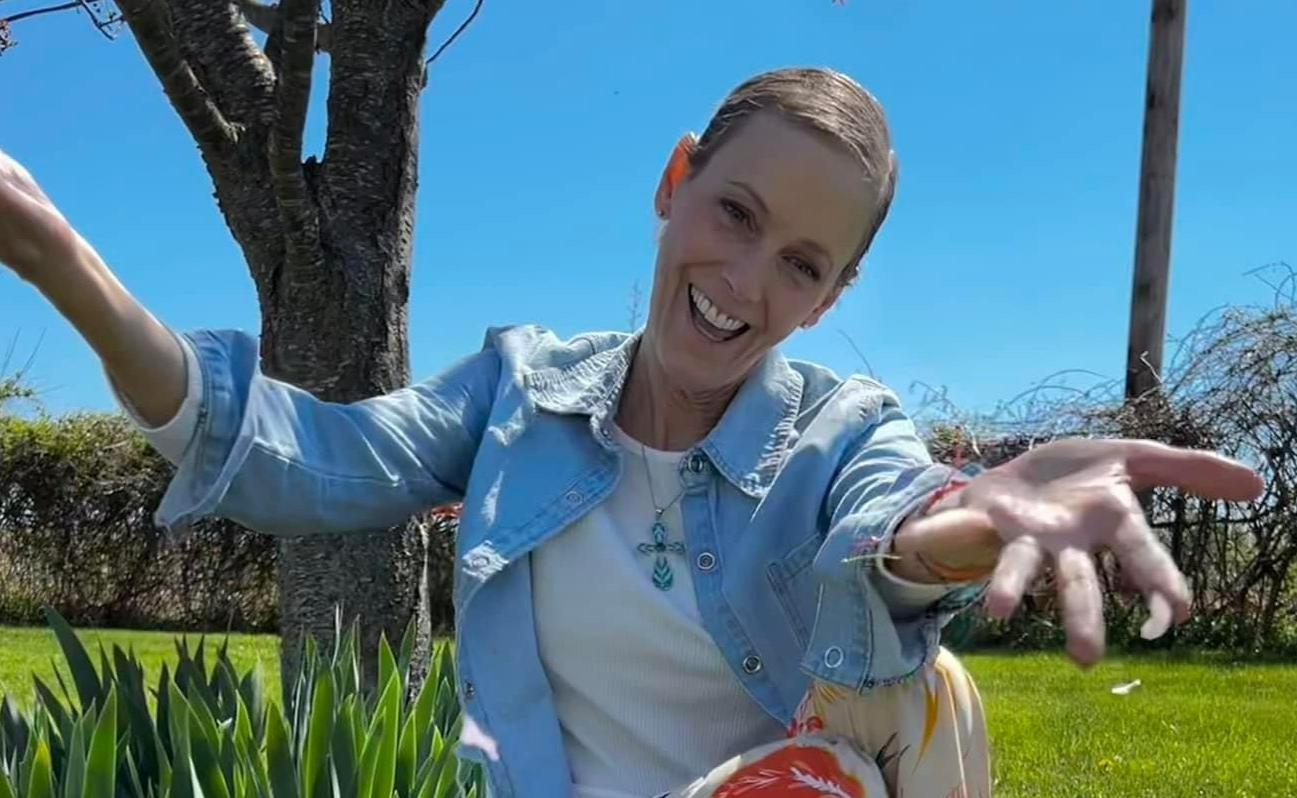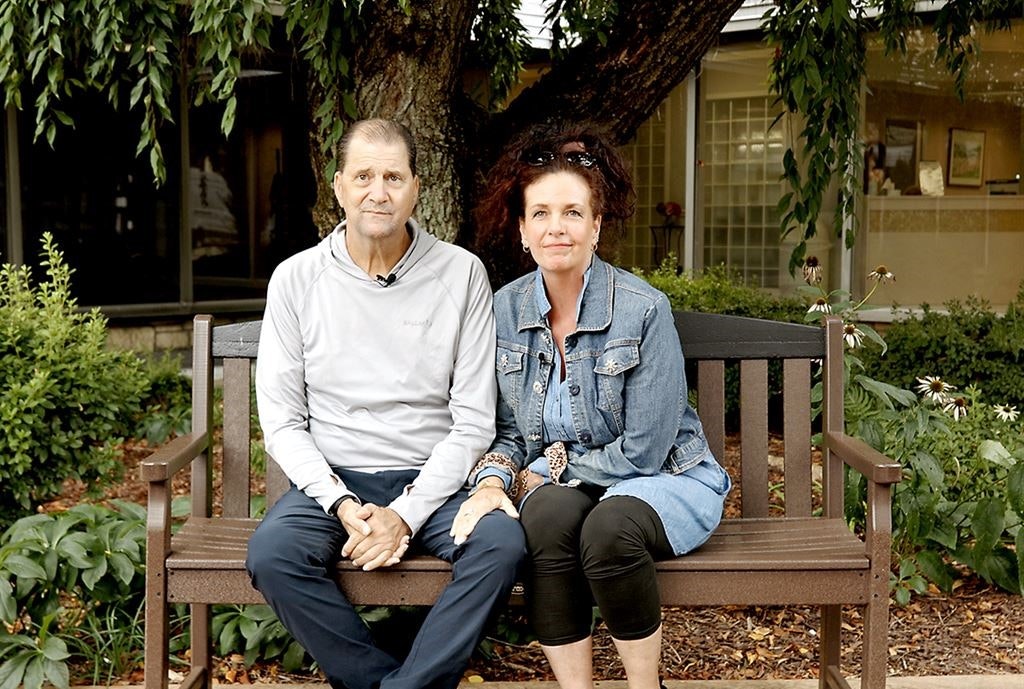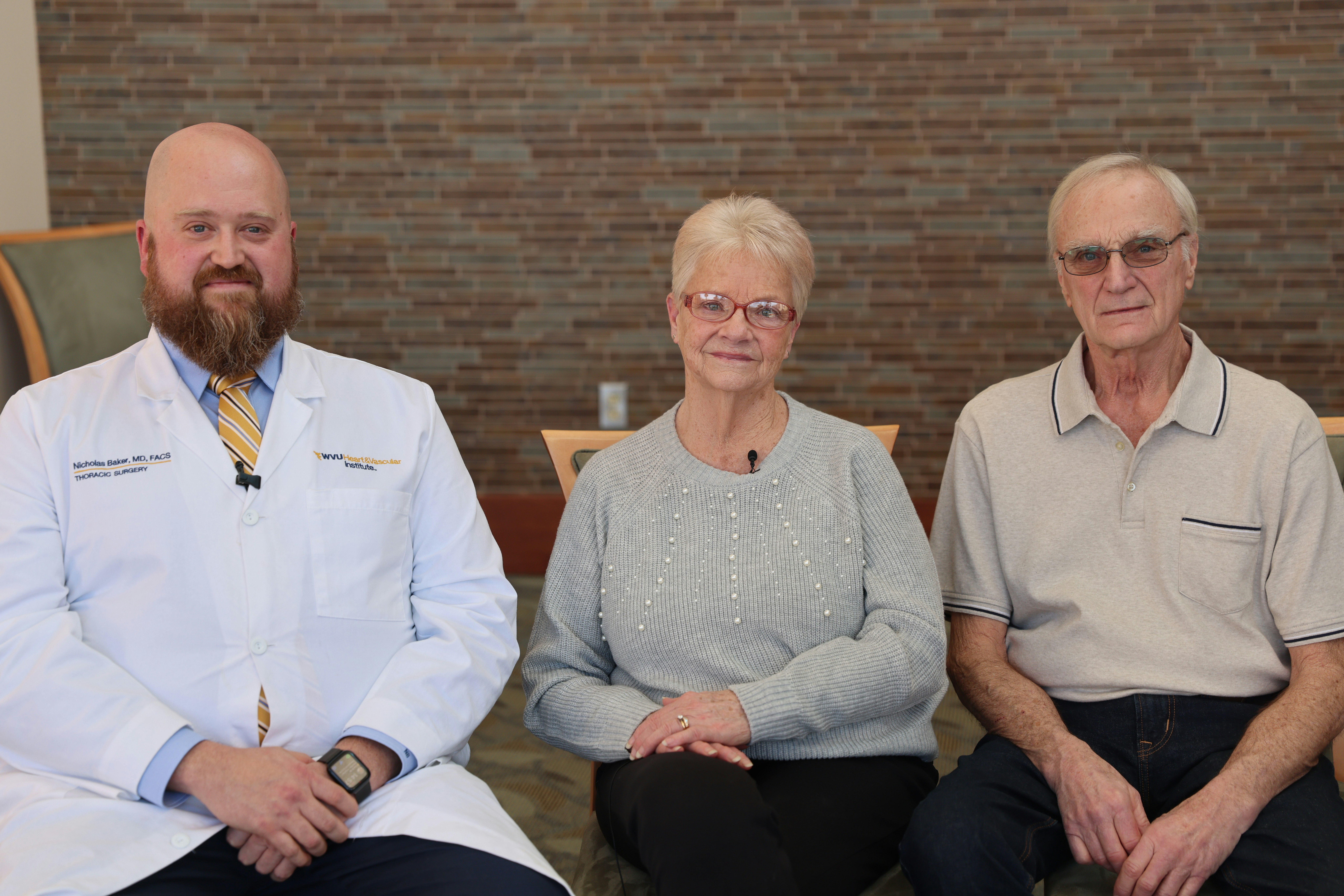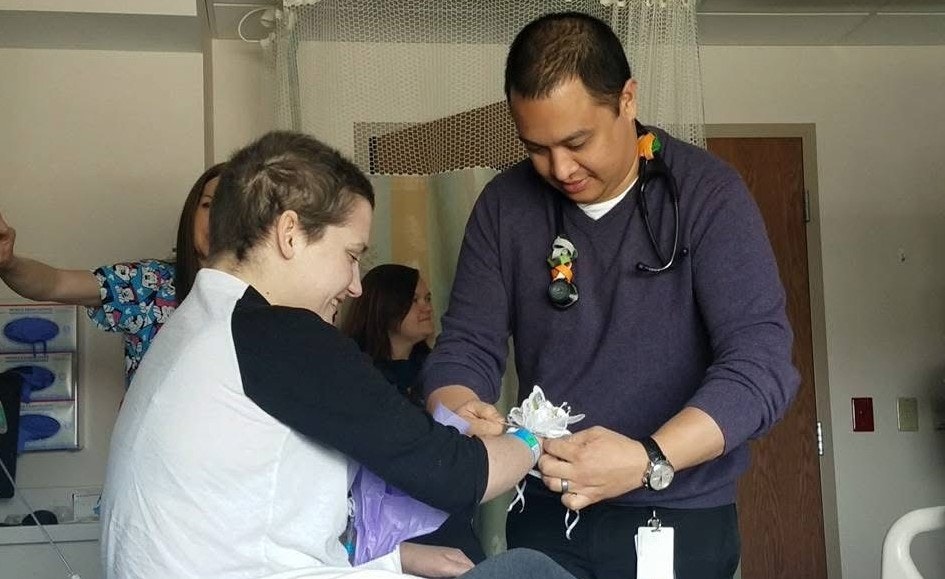
In recent years, there have been significant advances in the treatment of lung cancer, which is the leading cause of cancer death. At the WVU Cancer Institute, we’re at the forefront of lung cancer prevention, screening, and treatment. As part of an academic health system, our robust clinical trials and research expand opportunities for participation in the latest lung cancer treatments.
A lung cancer diagnosis can be frightening, but we provide some of the nation’s best cancer care. Here, you’ll find hope, compassion, and the expertise you need.
The WVU Cancer Institute has been designated a Lung Cancer Screening Center by the American College of Radiology, and our Lung Cancer Surgery Program has been nationally recognized as high performing by U.S. News & World Report.
Types of Thoracic Cancer We Treat
At the WVU Cancer Institute, we make sure your treatment is customized to your specific type of cancer and needs.
Our experienced lung cancer team brings together thoracic surgeons, medical and radiation oncologists, highly trained nurses, respiratory therapists, and other healthcare professionals.
Types of chest and lung cancers we treat include:
Chest wall tumors
These tumors may be cancerous or noncancerous and arise from either the bony or soft tissue part of the chest wall. They occur in the rib cage or breast bone, connective tissues, and muscles interfering with the lung function and causing discomfort or pain. Other chest wall tumors are caused by cancers that have spread from other cancers, like breast or lung. Surgical resection with or without radiation remains the treatment of choice
Mesothelioma
This type of tumor affects the thin layer of tissue that lines the lungs, chest wall, and abdominal organs. It’s caused by inhaling asbestos and is very aggressive. Pleural mesothelioma is the most common form that usually affects the lungs. Our multispecialty team uses cutting-edge treatments, including: immunotherapy, chemotherapy, radiation, and surgery with intra-operative hyperthermic chemoperfusion.
Non-small cell lung cancer
This is the most common type of lung cancer. There are different types of non-small cell lung cancer, including adenocarcinoma, squamous cell, and large cell carcinoma. Your risk for this type of cancer increases with tobacco use; exposure to radon, mineral and metal dust; radiation treatment to your chest or breast; and age. Each patient case is discussed in the multidisciplinary conference. Experts decide to treat the cancer with minimally invasive or robotic resection, chemotherapy, immunotherapy, radiation therapy, stereotactic body radiation therapy (SBRT), or a combination of different modalities. We have one of the busiest robotic surgery programs for lung cancer in the region.
Small-cell lung cancer
This type of cancer is also called small-cell carcinoma. It occurs when cells in the lungs grow uncontrollably and spread quickly. One of the leading causes is tobacco use and secondhand smoke. Exposure to radon and asbestos also greatly increases the risk of small-cell lung cancer.
Thymoma and other mediastinal tumors
Mediastinal cancer occurs in the tissue between the lungs. The mediastinum is the area that separates the lungs. These types of tumors are rare. Thymoma and thymic cysts develop in the thymus, a gland that lies behind the breast bone. WVU Cancer Institute experts are internationally renowned for robotic surgery for thymoma and can remove the tumor without cutting the breast bone.
Cancer that spreads to the lungs
This cancer starts in other parts of the body and spreads to the lungs. These are not considered lung cancers because they didn’t begin in the lung. They are commonly known as metastatic lung disease. Even though, these tumors have spread from other parts of the body surgical or radiation treatments are readily available and used based on recommendation from our multidisciplinary conference.
Lung Cancer Screening Program
If you are a current or former smoker, you may develop lung cancer without knowing it. The WVU Cancer Institute Lung Cancer Screening Program offers regular evaluations, counseling, and screenings to detect cancer early. The use of tobacco products causes about 85 percent of all lung cancer deaths. Our team works with you to detect and treat lung cancer at its earliest stages before symptoms occur and when treatment is more effective.
You may be eligible for the lung cancer screening program if you:
- Are between the ages of 50-80
- Have a >20 pack-year smoking history
- Are a current smoker or have quit smoking in the past 15 years
- Have not received a chest computed tomography (CT) scan in the last 12 months
- Have no symptoms of lung cancer
We accept self-referrals or referrals made by your primary care provider or specialist.
- Self-referral — To refer yourself online, please fill out the online form.
- Provider referral — Medical providers can call 855-WVU-CARE to refer a patient.
LUCAS Mobile Screening
The WVU Cancer Institute’s mobile lung cancer screening unit, LUCAS, is a 48-foot unit equipped with state-of-the-art lung cancer screening technology traveling to 42 of West Virginia’s most rural counties to provide lung cancer screening.
For more information, contact Cancer Prevention and Control at 304-293-2370 or 877-287-2272 (toll-free), or email cpc@hsc.wvu.edu.
Diagnostic Testing for Lung Cancer
There are different ways to diagnose lung cancer. It’s important for you to talk with your doctor if you notice any new symptoms, such as a sharp or dull pain in the chest or rib cage, a chronic cough or cough with blood, frequent respiratory infections, shortness of breath, chest pressure, or swollen lymph nodes.
If your doctor suspects you have cancer, they may order tests to figure out what’s going on. We use the latest tools to diagnose your condition and create a personalized plan for your care.
Tests we perform to diagnose lung cancer include:
- Advanced imaging — We use the latest technology, including chest x-ray, computed tomography (CT), magnetic resonance imaging (MRI), and positron emission tomography (PET) to detect signs of cancer and see whether it has spread to other areas of your body, such as your lymph nodes. Doctors can use endoscopic bronchial ultrasound, a minimally invasive test where an ultrasound wand is placed into your throat.
- Biopsy — During a biopsy, a doctor removes a small sample of tissue to analyze in a lab for signs of cancer. Biopsy results help oncologists plan the best treatment for you. There are several different biopsy types, including image-guided biopsy, sentinel lymph node biopsy, ultrasound-guided biopsy, and needle biopsy or needle aspiration.
- Ablative therapy — We use Cyberknife to burn lung cancer cells. We may also use microwave ablation to heat the tumor cells and destroy them.
- Bronchoscopy — Doctors use this minimally invasive procedure to look inside the windpipe to see if the tumor involves the windpipes (trachea and bronchus).
- Lung cancer screening — Doctors in the lung cancer screening program use a low-dose CT scan (LDCT) of your chest to screen for a lung mass or nodule that could indicate lung cancer. The machine uses x-rays to make detailed pictures of your lungs. This type of screening improves survival rates by detecting cancer earlier.
- Mediastinoscopy — Doctors use this minimally invasive test to examine the lymph nodes around the windpipe.
- Navigational robotic bronchoscopy — Doctors use this endoscopic technique using a GPS system to reach lung tumors deep in the lung and obtain a biopsy.
- Physical exam — Doctors use a physical exam to look for signs of something going on in your body, such as the presence of a tumor. These can include skin color changes, enlargement of an organ, or lumps in your lymph nodes.
- Pulmonary function test (PFT) — Doctors use this evaluation to examine your respiratory system and how well your lungs function.
- Sputum cytology — Doctors use this test to look for cancer cells in your mucus. During the test, you will breathe deeply and cough to bring up mucus from your lungs. Doctors then examine the mucus under a microscope.
Treatment for Lung Cancer
From your first visit, our team works with you to address your specific condition and needs. Your care plan may include:
- Clinical trials — Voluntary participation in clinical trials seeks to improve cancer diagnosis, treatment, and prevention. We offer only the most promising studies that are carefully reviewed by an institutional review board.
- Infusion therapy — Our doctors give you medicine and fluids through a catheter including antibiotics, chemotherapy, and fluids to build nutrients.
- Medical oncology — Medical oncology includes chemotherapy, immunotherapy, targeted therapy, and hormone therapy. Our doctors use the latest medicines to destroy cancer cells, slow cancer growth, and shrink tumors before surgery.
- Radiation oncology — We use radiation to target, destroy, and shrink many types of cancers. The treatments use a linear accelerator to produce precise, high-energy rays that target the exact area of cancer and spare healthy cells. Radiation oncology includes 3D conformal radiotherapy, image-guided radiation therapy, stereotactic radiation therapy, intensity-modulated radiation therapy, and brachytherapy.
- Intraoperative radiation therapy (IORT) — IORT is a new way of delivering radiation therapy. After doctors remove a cancerous lump, they insert the IORT applicator into the area where the lump was located and apply radiation.
- Surgery — Surgery can help doctors diagnose, stage, and treat many tumors. Surgery is a preferred treatment for early stage non-small cell lung cancer.
- Robotic segmentectomy — Surgeons use robotic-assisted lung-preserving surgery for early-stage lung cancer with small tumors. This new approach to treating lung cancer may lead to a better quality of life than more extensive surgery by decreasing blood loss, recovery time, and pain.
- Robotic lobectomy — If the tumor is a little larger, we perform a robotic lobectomy to remove the entire lobe rather than a segment.
- Robotic sleeve lobectomy — Our surgeons are part of one of the busiest lung cancer surgery programs for locally advanced lung cancer. The surgeons remove a lobe of the lung and re-implant the remaining lobes rather than removing the entire lung to preserve lung tissue. Patients who undergo sleeve lobectomy have much better outcomes compared to patients who have the whole lung removed.
- Robotic pneumonectomy – If the tumor is large enough and none of the above approaches are feasible the entire lung can be removed with small incisions.
- Tumor gene profiling and molecular testing — We use tumor gene profiling to understand the tumor’s DNA and analyze biomarkers (different genes and gene changes). This information is used to help plan the most effective treatment that matches your unique cancer.
- Immunotherapy — We use immunotherapy drugs called immune checkpoint inhibitors to block proteins from binding with their partner proteins and allowing the T cells to kill cancer cells.
- Endobronchial ablation with laser - Using a bronchoscope to reach the tumor, a laser is used to destroy cancer cells.
Resources for Lung Cancer
We believe cancer care goes beyond diagnosis and treatment. Many resources are available to answer questions and connect you with others, including:
Tobacco Cessation Clinic
At WVU Medicine, we’re committed to helping you quit tobacco. At our tobacco cessation clinic, we develop a treatment plan unique to you. We monitor and celebrate your progress and support you in making healthy changes. Learn more by calling 855-WVU-CARE.
The West Virginia Division of Tobacco Prevention partners with pharmacists to help people quit tobacco. Nearly 25 percent of West Virginia adults are cigarette smokers. To learn more about tobacco cessation programs at the regional and state level, please visit the Centers for Disease Control and Prevention and the West Virginia Division of Tobacco Cessation.
